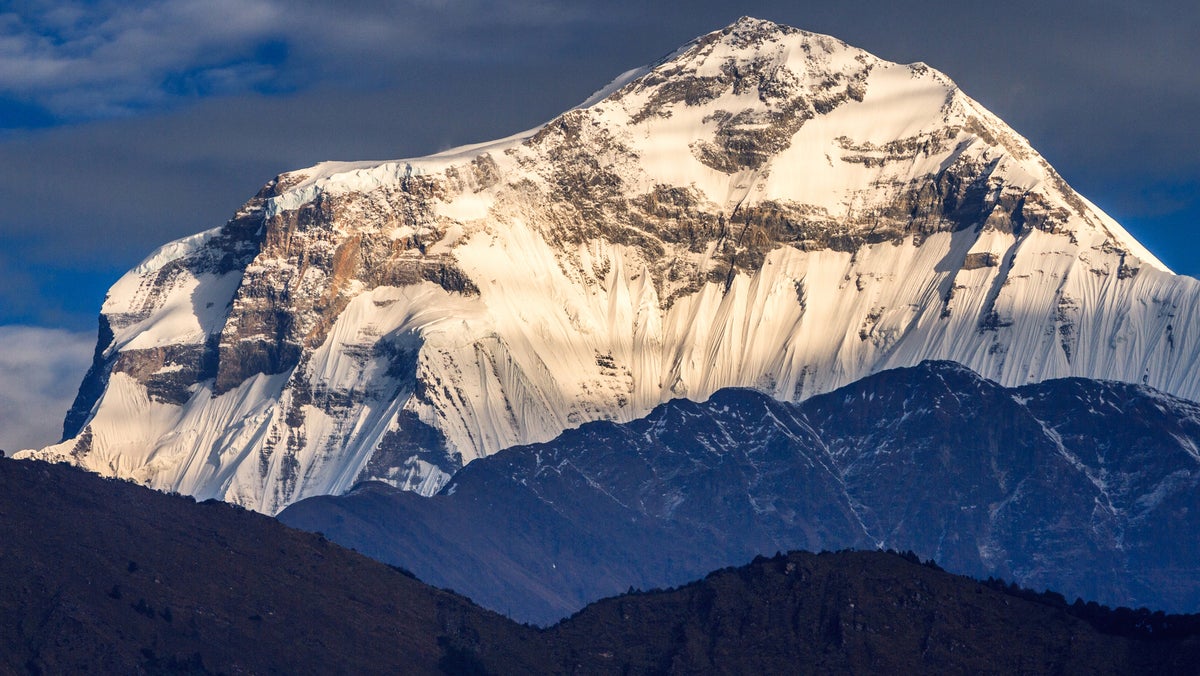No products in the cart.
Outdoor Adventure
Himalayan Season Opens with Ascents of Dhaulagiri and Annapurna
The spring climbing season in Nepal is just a few weeks old, and mountaineers are already reaching the top of the world’s highest peaks. On April 30, a team of 13 Chinese climbers reached the summit of Mount Everest to install a solar-powered weather station after ascending from Tibet. Across the border in Nepal, teams of climbers were still ascending to high camps to acclimatize before making attempts at the summit.
More than a dozen have already reached the summits of 26,795-foot Dhaulagiri and 26,545-foot Annapurna, and among the group are three record-setting women.
Taiwanese climber Tseng Ko-Erh, 29, known in Western climbing circles as Grace Tseng, became the youngest woman to ascend Annapurna without using supplemental oxygen. She summited on April 28, one of at least 12 people to reach the mountain’s pinnacle that day; the successful push occurred just after guides secured fixed ropes on the ridge above camp four.
Tseng is trying to become the youngest woman to climb the world’s 14 peaks above 8,000 meters (26,246 feet). Joining her atop Annapurna was another woman chasing that record: 21-year-old Brit Adriana Brownlee, whose successful climb marked her fourth summit on an 8,000-meter peak.
Tseng and Brownlee are both following an ambitious mountaineering schedule in 2022. In February, Tseng tried to ascend K2 but was turned back by bad weather. Now she is hoping to climb 26,781-foot Manaslu this spring before heading to Pakistan to climb five more high peaks this summer.
Brownlee, meanwhile, is planning to climb six peaks above 26,000 feet this year alone; she plans to attempt 28,169-foot Kanchenjunga next.
“I want to stand out, and be unique, and be able to show other people who are younger than me that you can do this as well,” Brownlee said recently on the Between the Mountains podcast. “I tried out university and didn’t like it, switched straight away. Tried out mountaineering and fell in love with it and have stuck at it.”
Tseng and Brownlee are part of a new generation of climbers attempting to scale multiple Himalayan peaks in one season. Traditionally, mountaineers have targeted one or maybe two high peaks in that time frame—simply trekking to base camps often takes multiple days or weeks to accomplish. But now some climbers can fly between base camps via helicopter and then join up with guided ascents throughout the season. This method was pioneered by Nepali climber Nirmal “Nims” Purja, who ascended all 14 8,000-meter peaks in 2019.
Both Tseng and Brownlee plan to use helicopters to get from one mountain to the next.
Another climber pursuing an ambitious Himalayan season is Norwegian Kristin Harila, who is also a professional skier and runner. Harila, 36, currently holds the record for the fastest women’s ascent of both Mount Everest and Lhotse, which she did in under 12 hours. This year, Harila is attempting to match or surpass Purja’s record on the peaks, which stands at six months and six days.
Similar to Tseng and Brownlee, Harila plans to take a helicopter between the mountains.
The biggest obstacle standing in front of these three climbers and their respective missions is not the mountains themselves but rather the continued total closure of the Chinese border to all travelers, including aspiring mountaineers, due to COVID-19 concerns. The women all still need to summit 26,400-foot Sishapangma, which is located entirely within China. There is also the problem of 26,750-foot Cho Oyu, typically climbed from a route on its vastly easier and safer north face, which is also in China. How the women navigate the border crossing is yet to be seen.
While multiple mountaineers have reached the tops of high peaks in the Himalayas, the season has not been without tragedy. Twenty-two people reached the summit of Dhaulagiri on April 9, but one failed to make it back to base camp. Experienced Greek climber Antonios Sykaris died while descending the mountain, near camp three, after an extended rescue attempt by his climbing partner, Dawa Sherpa.
Sykaris, 59, had previously climbed Mount Everest, Lhotse, Kanchenjunga, and Manaslu. His death is the first fatality of the 2022 climbing season in Nepal.
Source link

